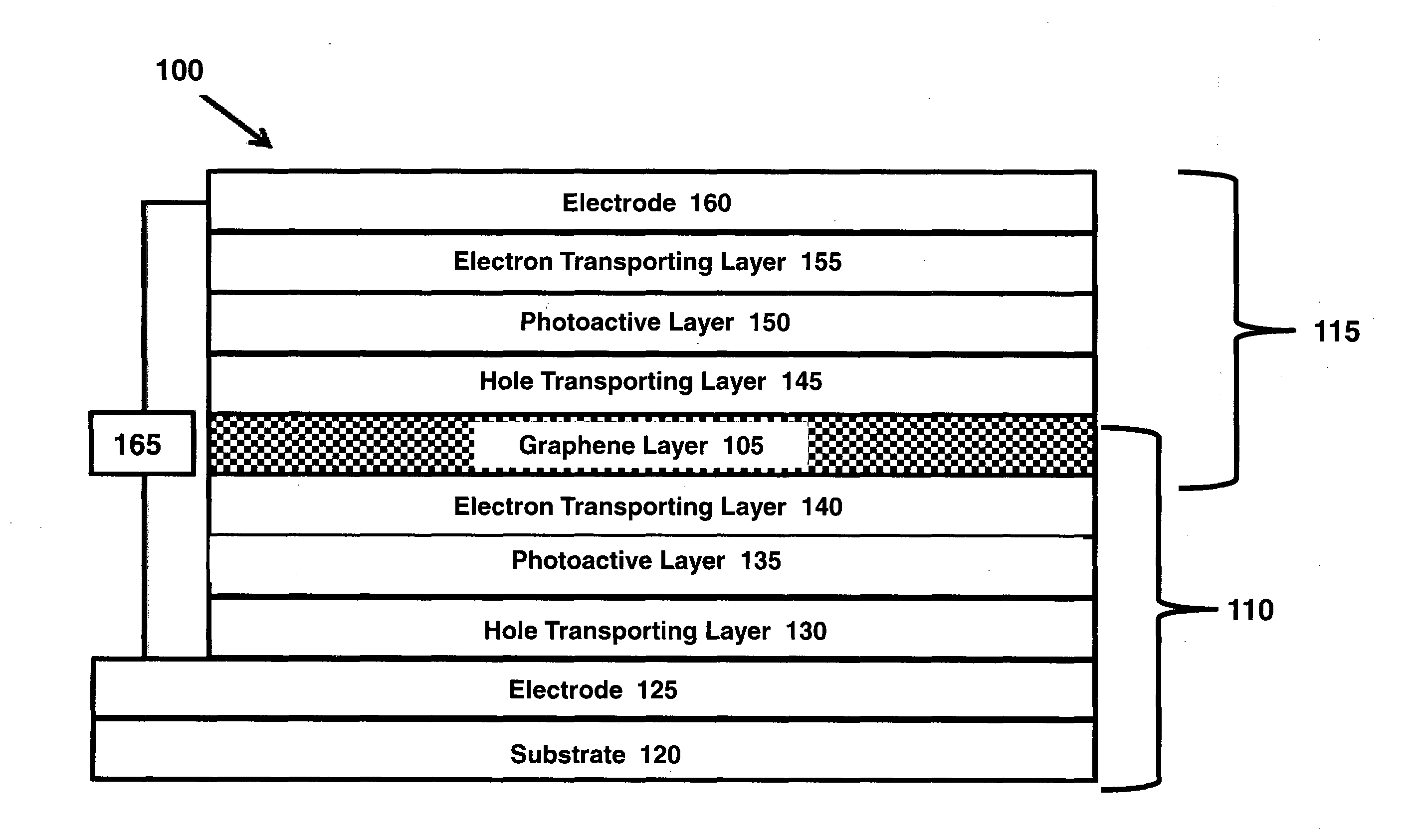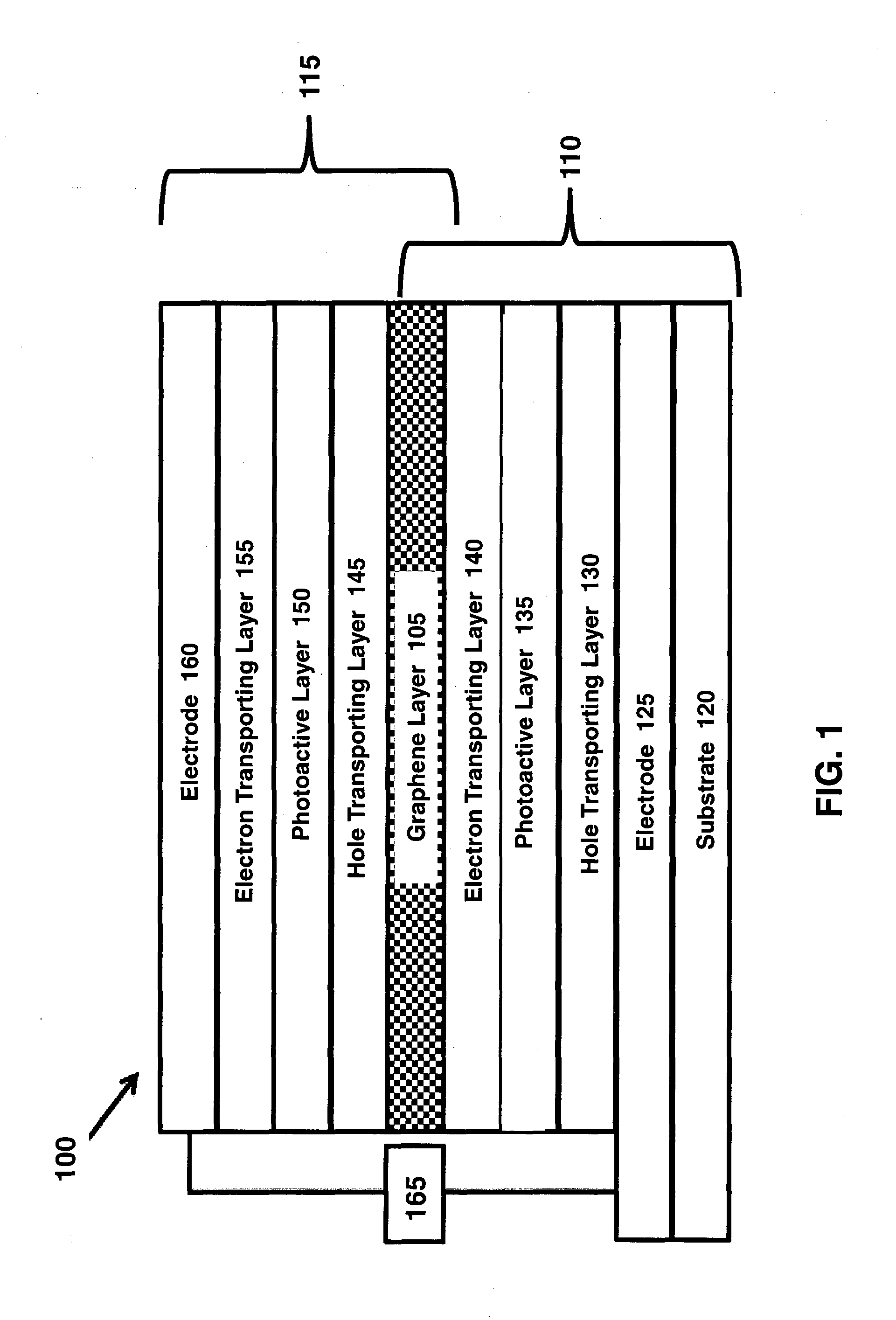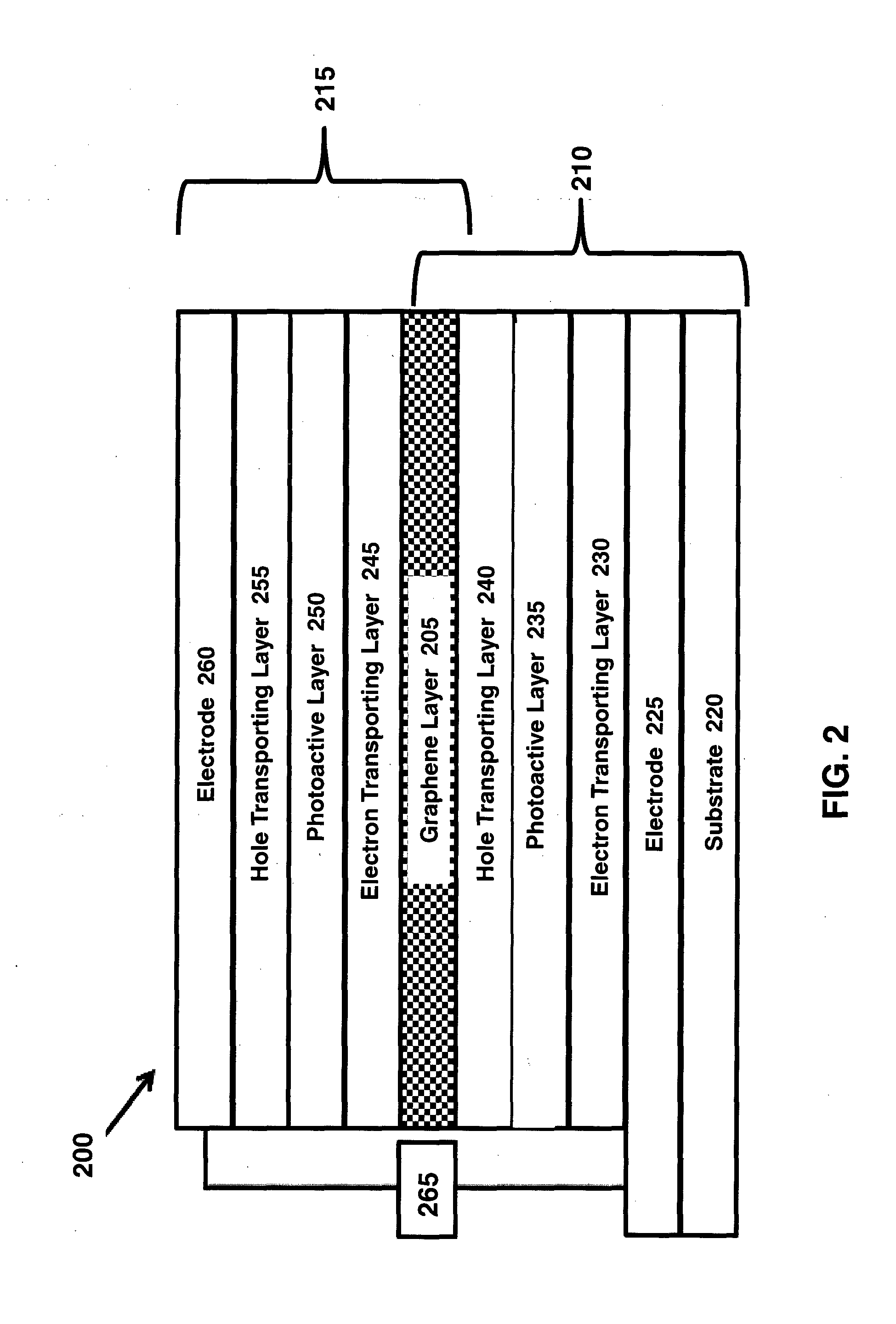Tandem solar cell with graphene interlayer and method of making
a solar cell and graphene interlayer technology, applied in the field of tandem solar cells, can solve the problems of inability to produce tandem cells, low efficiency of this type of polymer solar cell compared to inorganic solar cell, and inability to efficiently absorb solar irradiation
- Summary
- Abstract
- Description
- Claims
- Application Information
AI Technical Summary
Benefits of technology
Problems solved by technology
Method used
Image
Examples
example 1
Preparation of a Graphene Intermediate Layer
[0062]In this example, a large area (1×1 cm2) graphene film is synthesized on a copper (Cu) or nickel (Ni) coated SiO2 / Si wafer by using a chemical vapor deposition (CVD) process. The Cu or Ni film was then etched away by using iron chloride, ferric nitrate, ammonium persulphate, sodium persulfate and a hydrochloric acid solution. Dry transfer technology based on polydimethylsiloxane (PDMS) stamp was applied to transfer the graphene film on a targeted material. The thickness of the graphene film in this example ranged from about 0.5 nm to about 30 nm.
example 2
A Series Tandem Solar Cell with a Graphene Intermediate Layer
[0063]In this example, the device structure of the series tandem solar cell depicted in FIG. 1 was fabricated. In particular, a two-terminal series connected tandem cell was designed to extract holes and electrons by using a transparent indium tin oxide (ITO) anode and a thermally evaporated LiF / Al cathode. Spin coated PEDOT:PSS and thermally evaporated MoO3 were used as a hole transporting layer. In this example, the graphene intermediate layer acts as recombination contact zone that is transferred from a PDMS stamp onto a photoactive layer. Photoactive layers with distinct complementary absorption ranges were selected. In particular, the photoactive layers comprised two bulk heterojunction active layers stacked on top of each other. More specifically, a spin coated poly(3-hexylthiophene-2,5-diyl):[6,6]-phenyl C61 butyric acid methyl ester (P3HT:PCBM) was used as a photoactive layer 1 for a bottom subcell and a thermally ...
example 3
A Parallel Tandem Solar Cell with a Graphene Intermediate Layer
[0064]In this example, the device structure of the parallel tandem solar cell depicted in FIG. 3 was fabricated. In particular, a three-terminal parallel connected tandem cell was designed to extract holes through the graphene intermediate layer (common anode) and collect electrons through an ITO and thermally evaporated LiF / Al cathodes. Thermally evaporated MoO3 was used as a hole transporting layer. In this example, the graphene intermediate layer was transferred from a PDMS stamp onto a photoactive layer. Photoactive layers with distinct complementary absorption range were selected. In particular, the photoactive layers comprised two bulk heterojunction active layers stacked on top of each other. More specifically, a spin coated poly(3-hexylthiophene-2,5-diyl):[6,6]-phenyl C61 butyric acid methyl ester (P3HT:PCBM) was used as the photoactive layer 1 for a bottom subcell and a thermally evaporated zinc phthalocyanine:f...
PUM
 Login to View More
Login to View More Abstract
Description
Claims
Application Information
 Login to View More
Login to View More - R&D
- Intellectual Property
- Life Sciences
- Materials
- Tech Scout
- Unparalleled Data Quality
- Higher Quality Content
- 60% Fewer Hallucinations
Browse by: Latest US Patents, China's latest patents, Technical Efficacy Thesaurus, Application Domain, Technology Topic, Popular Technical Reports.
© 2025 PatSnap. All rights reserved.Legal|Privacy policy|Modern Slavery Act Transparency Statement|Sitemap|About US| Contact US: help@patsnap.com



